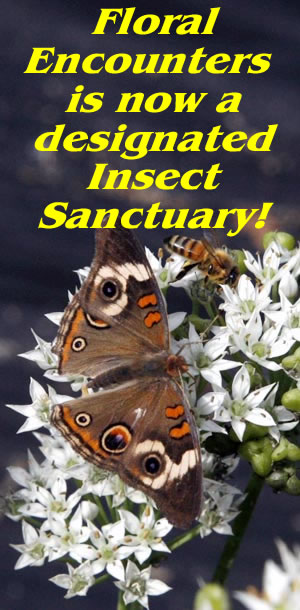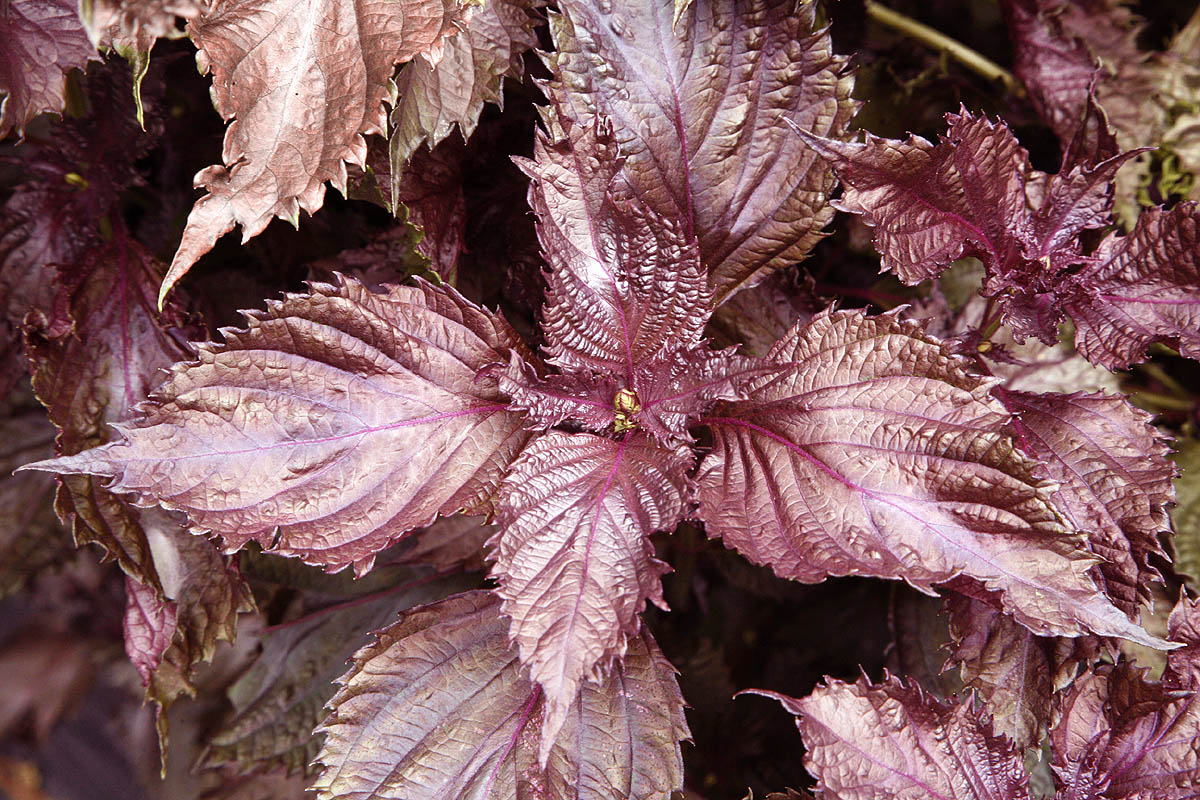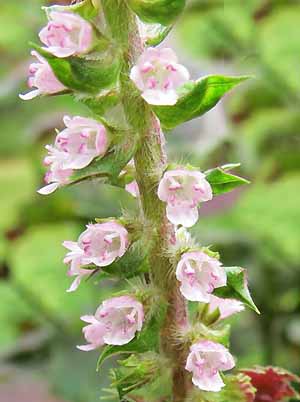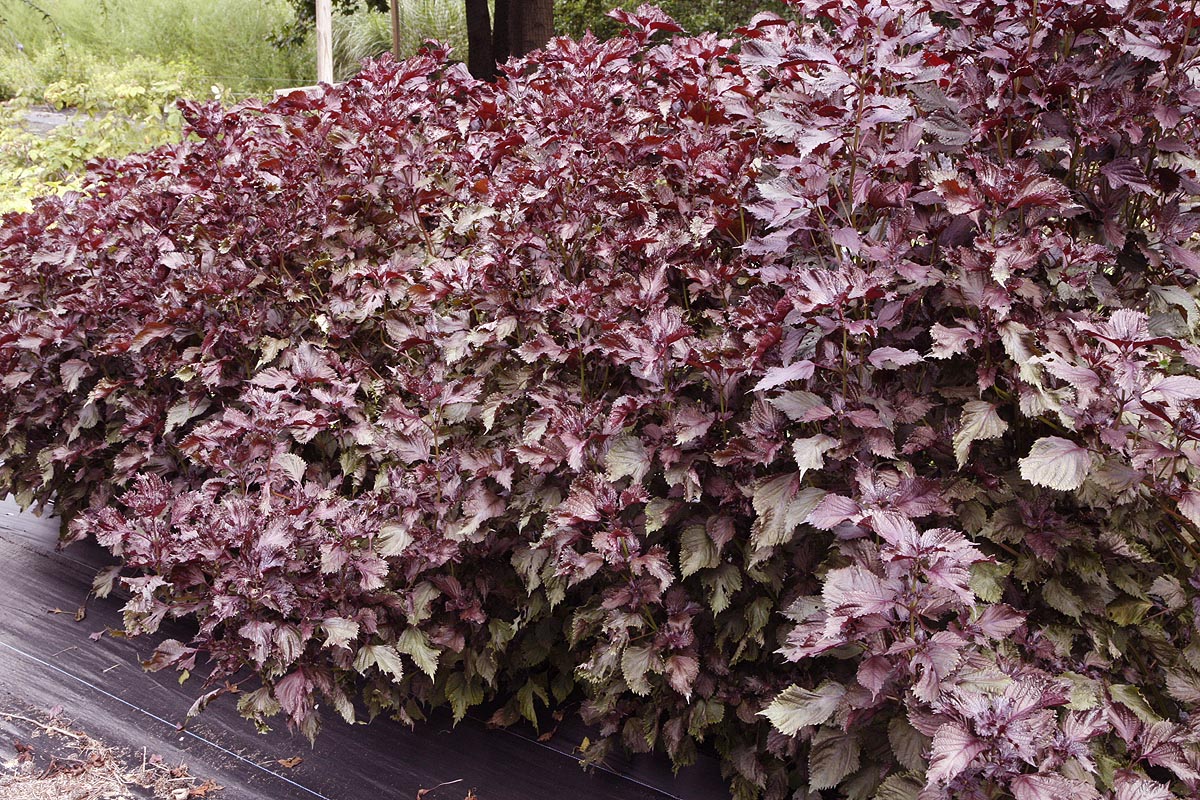Red Shiso also known as Red Perilla or Akajiso, is a lovely plant both as an ornamental and as a food plant. Ornamentally it is grown for its interesting leaves which are red to deep red in color, crinkly and deeply veined making them stand out if used in a flower bed. Since it can reach 4 feet (1.2m) in height it makes a good back border plant. It is very aromatic and the slightest touch will set off the scent, so don't plant it too close to your deck unless you love the smell. It's a tough plant, it does very well in hot sunny locations but can also thrive in some shade. It needs very little maintenance once established and as an ornamental its pretty drought tolerant. More water is needed if you want to harvest the leaves.
An important plant for Japanese cuisine where it is used extensively. Red Shiso is not easy to purchase fresh unless you are lucky enough to be close to a Japanese market. However its very easy to grow your own. It has a unique flavor that is not as strong as its Green Shiso cousin so is often preferred by western taste buds.
Wildlife don't eat it. Deer and rabbits avoid it. Since it requires short days to flower it produces blooms late in the fall when most other plants have ceased blooming. This makes it ideal for gardens that encourage wildlife as it is a source of nectar when there is little else available. Honey bees, native bees and butterflies flock to the flowers.
There is also green. Each have their own particular aroma and flavor but the basic appearance is mostly the same.
Plants similar to Red Shiso
Perilla looks rather like an overgrown nettle or a coleus plant. It is a member of the mint family - as are the others - so the appearance is understandable. Some of its common names reflect this resemblance however its not a mint and not a coleus or a nettle.
Sowing indoors. Start seeds about 6 weeks before last frost, use good sterile seeding mix in seed trays, individual cells or small pots and place in good bright light. Surface sow or only lightly cover seeds. See General Growing Instructions for more detailed information. Usually germinate with 8-10 days. Transplant into individual pots once they are large enough to handle and grow on to about 4-5 inches (10-12 cm) tall before transplanting to final location.
Direct sowing. Prepare bed taking care to remove all weeds and ensure surface soil is fine. Only lightly cover seeds and keep moist. If temperatures are warm germination is usually within two weeks but can be longer if temperatures drop below 68 F (20 C) and surface sow the seeds.
If bushy plants are desired pinch off the tops to encourage branching. Flowers can be pinched off if leaf production is desired. If allowed to flower, cut flower stalks when finished to prevent self seeding. Plant will seed prolifically if allowed.
The plant requires short days to flower so provides flowers late in the year when many other plants have ceased flowering. This is ideal for many insects and especially honey bees which love the plant.
If drying for later use, take whole branches of leaves just before flowering when the flavor is at its peak. Cut the whole stems, bunch and hang upside down in a warm dry dark space until dry. Then strip the leaves from the stalks and store in air tight containers in a cool dark place to retain the flavour as long as possible.
If harvesting seed use a large bin to collect whole branches at one time.
For this reason its more commonly used in salads where the stems are also popular as they have a nice crunchy texture next to the tender leaves. It is also used to make a refreshing summer beverage known as red perilla juice or aka shiso juice which helps to stimulate the appetite and aid digestion on hot days and helps to recover from exhaustion.
It is also used extensively in picking and especially in pickled plums and pickled ginger as well as a popular mixed vegetable pickle known as Kyoto style. The red leaves are used extensively for coloring different dishes, desserts, and beverages including cocktails. The red coloring contains many antioxidants making it a healthy inclusion in all culinary creations.
The older leaves are used as a garnish for drinks, salads and many other dishes it can be used as a substitute for basil when added color is required although it does not have quite the same flavor so test it before you add it to your favorite dish.
The seeds of both shiso varieties are often preserved in salt or are used as a spice in pickles, tempura. miso and crushed and added to mustard. However the red variety is far more preferable.
The crushed leaves rubbed onto the skin serve as an insect repellant; it is reported to be especially effective against ticks
Perilla Oil is obtained by pressing the seeds of perilla, which contain 35 to 45 percent oil. It is most commonly used in Asia where it is valued more for its medicinal benefit as it is a very rich source of omega-3 fatty acid.
Flower spikes can be dried and used in floral arrangements. They can be spray painted and used as a filler plant.
Other names
purple mint, Japanese basil, wild coleus (although its not a coleus) Shiso, Rattlesnake Weed, Beefsteak Plant









